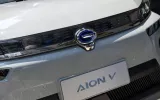Even if you haven't studied color psychology, you're probably aware that different colors evoke different emotions and have distinct meanings.
Colors that you like are typically underlying variables in how you arrange your home, the clothes you buy, the automobile you drive, and even the foods you want.
Color selection is essential in branding, marketing, and site design. Color can account for up to 85% of a person's decision to buy from a brand. Within 90 seconds, color may develop or destroy brand trust, increase or destroy consumer loyalty, and determine 90% of a customer's view of a business.
I think it should be no surprise when you order your first website or revamp an outdated one that your web designer will ask about your website color preferences right away.
Read through our guidelines for making wise web design decisions based on color psychology before you give an answer based on your personal favorites.
Step 1: Think about the different connotations that each hue has.
You may already be familiar with the meanings of standard colors to some extent. For example, you may be drawn to blue when you need to relax, whereas orange may not appear suited for official business documents.
Some of these attributes may explain why some colors are more popular in specific industries. For example, blue is a popular color for banks, whereas red is highly recommended for dating service businesses. A consumer who visits a bright yellow website to read articles about relaxation and deep breathing, on the other hand, may sense that something isn't quite right - even if they can't describe why.
Let's review some frequent color meanings. Which ones did you pick up on right away? Which one surprised you the most?
Blue
Blue reduces appetite naturally; therefore, utilizing it on a food-related website may turn off visitors. Many people believe that this is because there aren't many blue items in everyday foods. Blue, however, is one of the most preferred colors among both men and women outside of the food industry. As a result, businesses frequently select this color to reassure or inspire trust because it appeals to many individuals.
Yellow
Yellow is bright and cheerful, but it's important to remember that it's also a cautionary color. When employed in small doses, it creates excitement for your website visitors, but it becomes abrasive and overbearing when used in more significant quantities. On the other hand, yellow can be an excellent accent color for drawing attention to a specific call to action.
Green
The color green has such strong links with nature and is ecologically friendly that it can communicate a message about a company's ethics by looking at it. Green is also growing in popularity because it combines the soothing benefits of blue with the energetic impacts of yellow. Money and expansion are also specific links, making this a popular choice across various sectors.
Orange
Orange is a complex color to control. Although it is a kid's favorite, most adults either adore it or despise it. As a result, putting it into a website aimed at adult buyers should be done with care. However, because orange is linked with energy, excitement, enthusiasm, and warmth, it can help define your brand's personality and encourage site visitors to take action for particular firms.
White
If you know the term "white space," you're probably aware of the significance of the color white in web design. White evokes a sense of liberation, giving your visitors the visual breathing area they need to process the information you've provided.
On the other hand, white has a significant disadvantage: when genuine white (#fffff) is combined with true black (#000000), it can be hard on the eyes and appear cold, stark, or off-putting. Instead, use an off-white, such as ivory, which has the same benefits as white but a little warmer tone that is more soothing.
Black
Although black is one of the most often used hues, it should be utilized with caution because it has many contradictory implications. It's edgy, but yet business; formal, but also classic, for example. When used sparingly, black can provide a grounding effect, but it can easily overwhelm the entire design when used excessively.
The best info is that black and white have a wide range of tones, so using darker colors and lighter tints can provide the same benefits while having fewer negatives.
Red
Because red is one of the most noticeable hues in the spectrum, it elicits powerful emotions. Red is often connected with love, passion, and drama, but it may also be associated with power, aggression, or even anger. As a result, it's best taken in modest dosages.
Many web designers think it is the most fantastic option for buttons and other calls to action because it firmly pushes action. However, don't feel like this is your only option because research doesn't always back up this assertion - we discussed our approach to compelling calls to action in full in a previous blog article.
Purple
Purple, like orange, can be divisive; it will likely attract female clients while repelling male customers. Purple mixes the strength of red with the steadiness of blue, giving it a real luxury feel. On the other hand, purple represents intrigue, creativity, and wisdom. It isn't appropriate for many industries, but it may be the best option for a select few.
Pink
Pink has strong gender connotations and is frequently associated with delicacy and softness. It might appear delicate and fragile, like a flower, in lighter tones, while more powerful tints can appear ecstatic or raucous. Pink, like red, denotes love, but it's a kinder, more intimate kind of love than the fiery intensity we associate with red.
Brown
Brown is the least popular web design color. All men and women dislike it, and it isn't easy to match with other hues. Its favorable implications are reliability and toughness, but keeping it from looking drab and dark requires an excellent eye for design.
Blush, an exact tone of nude pink that verges on beige, has grown increasingly popular in recent years as a modern alternative to both pink and brown. Businesses that cater to women, particularly those in their 20s and 30s, frequently utilize blush as a neutral with more feminine undertones instead of tan or beige.
Step 2: Think about which colors are best for your business sector.
While it is unlikely that your company's purpose is to blend in with the competition fully, some colors are particularly well suited to specific industries (and other colors that can send your users running away).
The following colors are some of the most common colors used in various industries:
Blue: Medical, science, utilities, politics, healthcare, recruitment, law, information technology, dental, and corporate are just a few examples.
Green: Medicine, education, government, employment, ecological industry, tourism, human resource management, and economics.
Black: Construction, banking, oil, banking, fashion, beauty, mining, marketing.
Grey: cars, writing, sportswear, science, and tech.
Red: fashion, design, cooking, dating, video games, retail, automotive, gadgets.
Orange: beverages, retail, wellness.
Yellow: automotive, retail, cooking, tech, architecture.
Pink: health, diet, makeups, retail.
While you shouldn't let these trends limit your color choices for your website, they are trends for a reason. Because your company's general message is likely to be comparable to that of your closest competitors, adopting a color that's entirely out of the box for your industry could do more harm than good (by delivering the wrong message to customers).






















